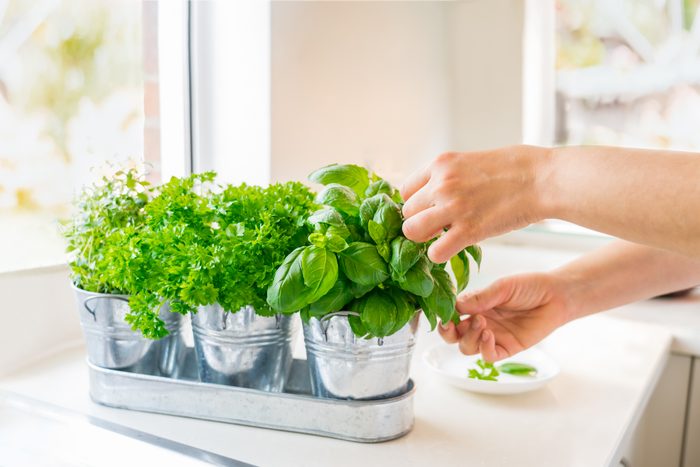
Keeping a garden can yield even more for you than a vibrant, satisfying harvest. In fact, a 2020 review published in the British Medical Journal‘s BMJ Open that looked at 77 studies found that gardens, either in public spaces or the privacy of home, “can improve the health and well-being for people with a range of health and social needs,” the review’s authors reported.
It’s not just homegrown fruits and veggies that deliver such fresh effects—herbs can, too. “Sourcing herbs is much like sourcing food—the closer it grows to you, and the closer to natural methods, the better,’’ explains Lauren Haynes, clinical herbalist and CEO of Wooden Spoon Herbs. “The closer you are to that plant, the better chance you have of preserving all those phytochemicals that give plants their medicinal actions.”
In fact, explains Danielle Gaffen, MS, RDN, LD, some herbs are so potent that you need to practice wisdom so they don’t interact with any medication or supplement you might be taking. “Although some of the phytochemicals and bioactive compounds (plant-based chemicals and compounds) provided in herbs and plants have been identified and characterized, many of them have unknown actions and may interact with pharmaceutical drugs,” Gaffen says. “When herbs are used in combination with each other or in concentrated forms, the likelihood for a drug nutrient interaction or side effect increases.”
These specialists recommend speaking with your licensed health care provider before you try medicinal plants or other natural remedies. Haynes says that’s especially true for anyone who’s pregnant, breastfeeding, has a chronic illness, or is taking prescribed medications. However, she notes, “Most kitchen and garden herbs are safe to use daily! … Start slow and get to know one herb or product at a time. When in doubt, reach out to a trained herbalist!”
Haynes and Gaffen say these 16 medicinal herbs are a great way to plant the seed.
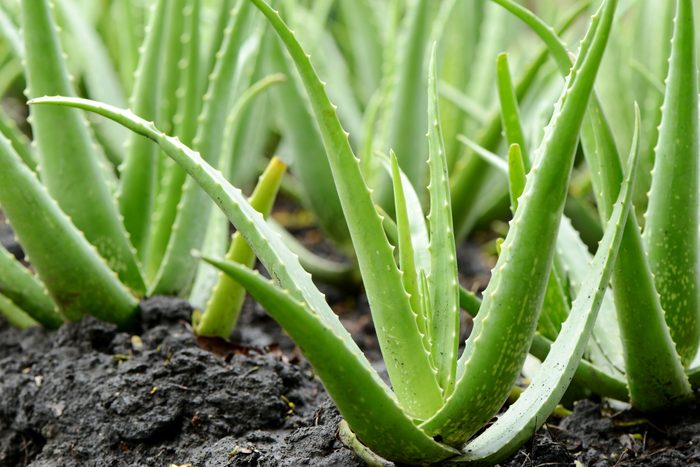
Aloe Vera
A classic, low-maintenance succulent with light green leaves, aloe vera is well known as a soothing gel after you’ve spent a little too much time in the sun or have gotten a minor scrape. “Aloe vera is a cooling, soothing herb that promotes cell proliferation and tissue repair,” Haynes says. “It has a moistening yet astringent action, making it effective at soothing sunburns.”
This hardy healing plant can also heal sensitive tissues of the gastrointestinal tract when you add its inner flesh to a smoothie. To help you try this out safely, our senior editor recommends giving edible aloe a try from a brand like Pitaya Foods.
Read on to learn about other benefits of aloe vera.
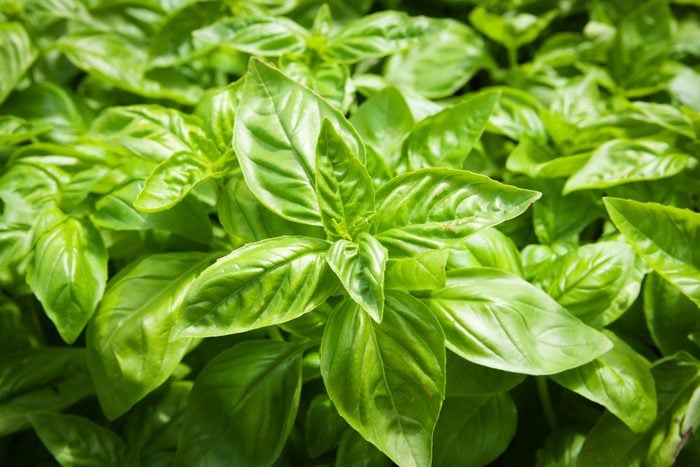
Basil
Basil is a powerhouse, not only for flavor but also for its medicinal properties. One 2019 study in the International Journal of Biological Macromolecules showed that basil polysaccharide, one of the compositions and active ingredients in basil, may have anti-tumor, antibacterial and antioxidant properties. According to a review in the International Journal of Food Properties, basil has several types of antioxidants as well as anti-inflammatory and anti-microbial properties.
Here are the best herbs for your home garden
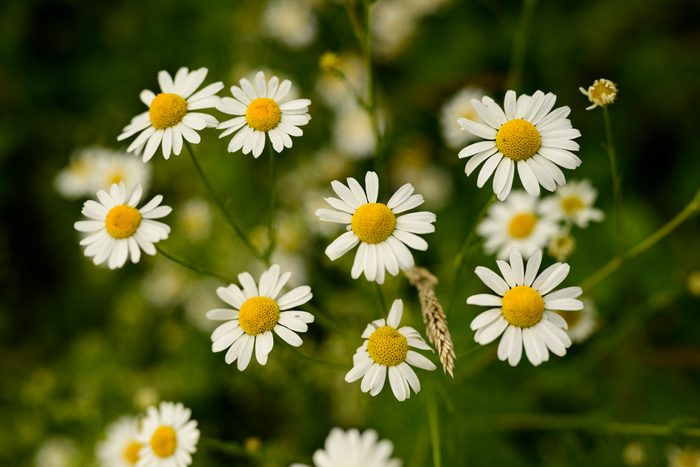
Chamomile
Use the flower heads of this medicinal herb for infusions and salves to relieve indigestion.
Chamomile is also used topically and is often an ingredient in skin care products. “With its apple-like scent, chamomile is both calming and uplifting,” says Jeanette Jacknin, MD, a holistic dermatologist in Solana Beach, California, and author of Smart Medicine for Your Skin. “It is said to help heal the skin by reducing dryness, itching, redness, and sensitivity in irritated and inflamed skin. Chamomile is included in many topicals for irritated itching problems including bug bites and contact dermatitis.”
Be aware that chamomile can have adverse reactions with some medication. “Interactions between chamomile and cyclosporine (a drug used to prevent rejection of organ transplants) and warfarin (a blood thinner) have been reported, and there are theoretical reasons to suspect that chamomile might interact with other drugs as well,” Gaffen says. For a wider range of users, “Side effects are uncommon [but] may include nausea, dizziness, and allergic reactions.”
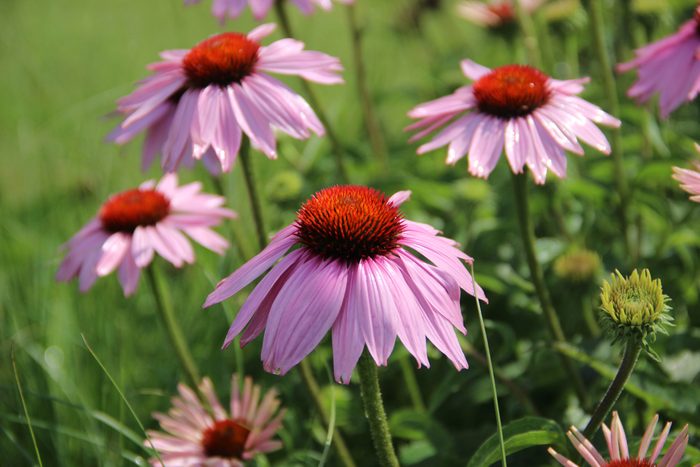
Echinacea
Echinacea is known as a medicinal herb to boost your immune system. A review in Metabolism Open showed that taking echinacea supplements could be anti-inflammatory for cytokines, a kind of protein that affects the immune system. The findings also suggested that taking echinacea may inhibit cytokines related to COVID-19, which may help minimize the infection’s severity.
Here’s How Many Americans Have Had the Flu So Far This Year, the CDC Says
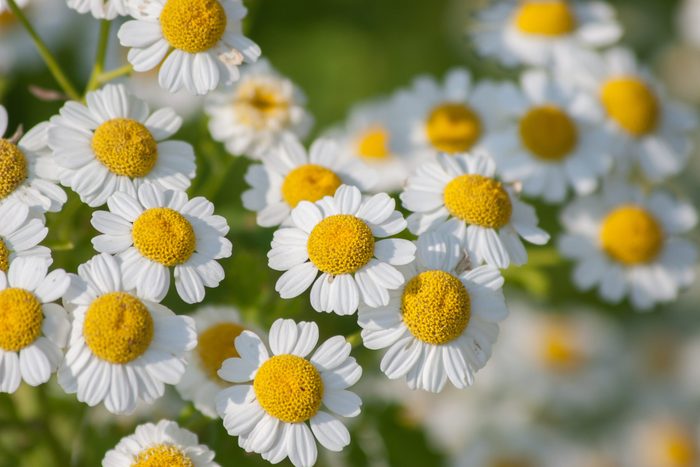
Feverfew
You can use the leaves and flowers of this medicinal herb for teas, or chew the leaves to ease headache pain. “Some research suggests that feverfew may help prevent migraine headaches, but the results have been mixed,” says Gaffen. She notes that there is also some research indicating feverfew may lower migraine frequency and some symptoms, such as pain, nausea and light sensitivity.
Feverfew can also be used topically. According to Dr. Jacknin, it may provide relief for arthritis, and reduce redness, as well as pain and inflammation for a variety of rashes such as contact dermatitis, insect bites, and rosacea.
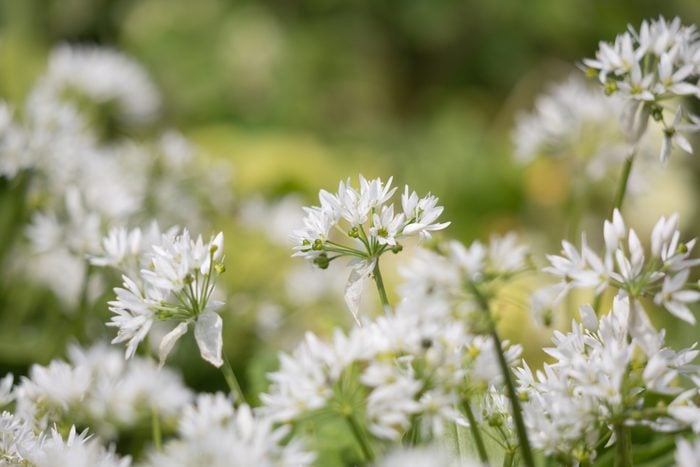
Garlic
Garlic doesn’t just ward off kisses and vampires—this culinary aromatic is a powerhouse that may help keep ailments at bay. “Garlic has traditionally been used as everything from an antifungal to an expectorant,” says Haynes. “Allicin is a sulphuric component that gives garlic both its pungent smell and medicinal action.”
Haynes explains that garlic also “supports healthy blood pressure levels and may have therapeutic uses akin to a botanical antibiotic.”
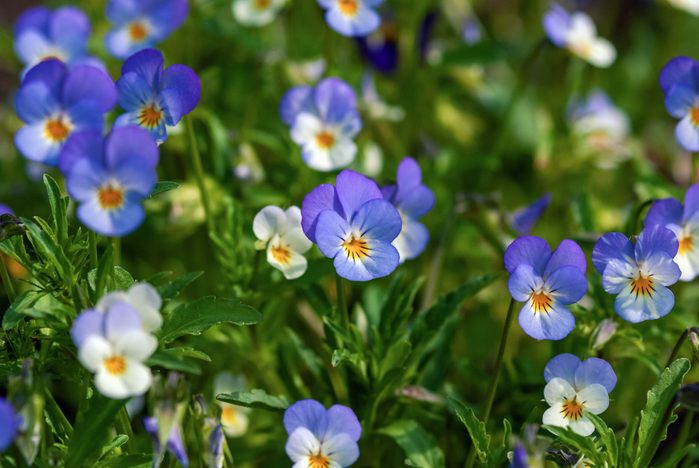
Johnny Jump up
With antimicrobial and anti-inflammatory properties, this medicinal herb may be good for eczema and acne. “It’s also used to help treat wounds and itching, and ease diaper rash,” says Dr. Jacknin. “But large doses may cause skin irritations, nausea, and vomiting, so always start with a small amount of lotion on just one part of the affected area.”
These Are the Only 3 Skincare Products One Dermatologist Says We All Need
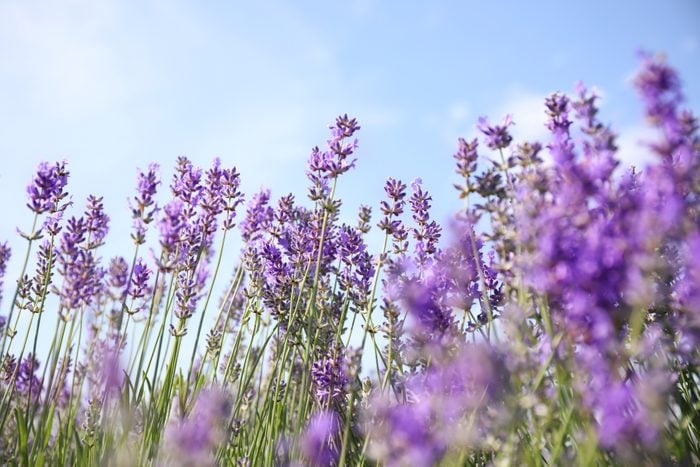
Lavender
Lavender is known to promote feelings of calm and relaxation, but it may also ease pain..and, when it’s applied as an antiseptic. “It’s reported to be a helpful aid for rapid healing and soothing if a diluted amount is applied directly on acne, burns, and insect bites,” Dr. Jacknin says.
One caution she adds if you use lavender as a wind-down tool: “If you have low blood pressure,” she says, “don’t use it in the bath, as lavender oil lowers blood pressure as it helps to relax.”
Consider these essential oils for sleep
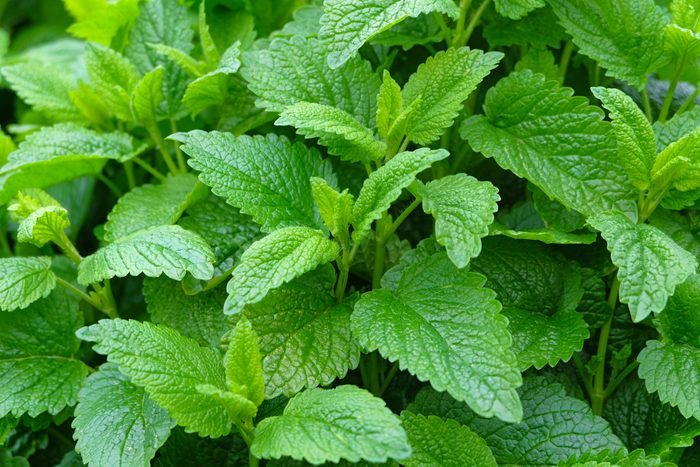
Lemon Balm
A relative of mint, lemon balm is a versatile medicinal herb that is a powerhouse for treating a variety of ailments, including relieving stress and anxiety to aiding an upset stomach. “Lemon balm has traditionally been used to improve mood and cognitive function, but it can also help relieve stress and reduce anxiety, ease insomnia and other sleep disorders,” explains Gaffen.
She adds that lemon balm also helps treat cold sores and relieve indigestion and can relieve feelings of nausea and minimize menstrual cramps. Some find it also helps ease headaches and even toothaches.
Don’t miss these insider tips to save money on gardening
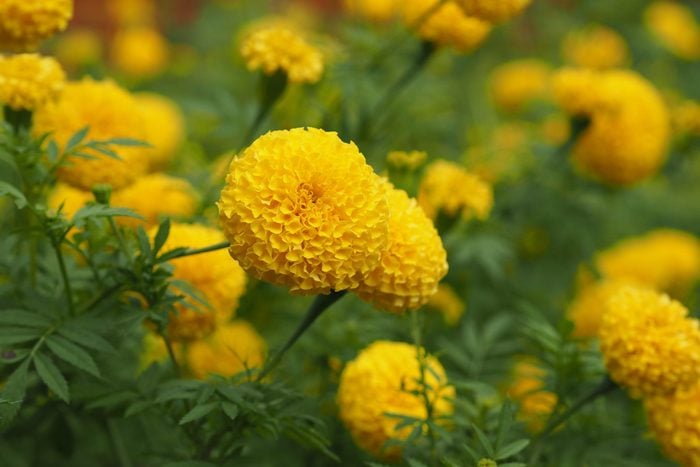
Marigold
Marigold is one herb that may not only be good for sunburn, acne, and blemishes but also may soothe ulcers and digestive problems.
“Marigold, or Calendula, is one of the best all-around skin remedies, good for minor cuts and burns, insect bites, dry skin, and acne,” says Dr. Jacknin. “Calendula tea can be used as an astringent facial rinse two or three times a day for acne. Many preparations are available over-the-counter as salves, creams, and lotions.”
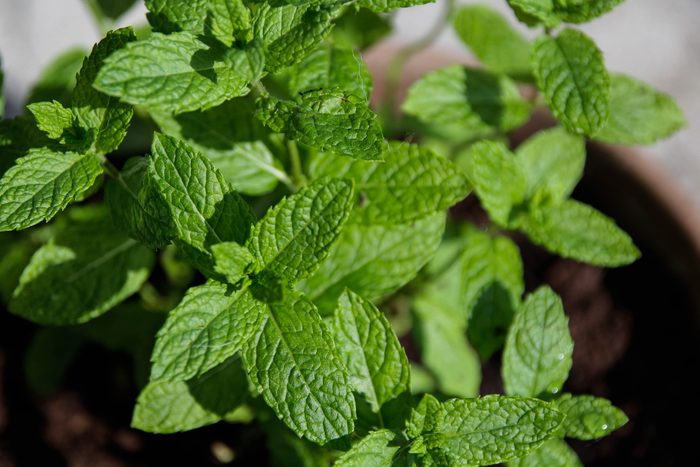
Peppermint
“Both peppermint leaves and the essential oil from peppermint have been used for health purposes,” explains Gaffen.
Sipping peppermint tea is often considered a good digestive aid that can ease nausea. However, one important note: some research has shown that drinking a cup of mint tea could have contraindications for people with heartburn or on certain medications. “Peppermint oil taken alone may worsen indigestion in some people and cause unwanted side effects,” says Gaffen.
There is some research on peppermint and IBS. “A small amount of research suggests that peppermint oil in enteric-coated capsules may improve IBS symptoms in adults.”
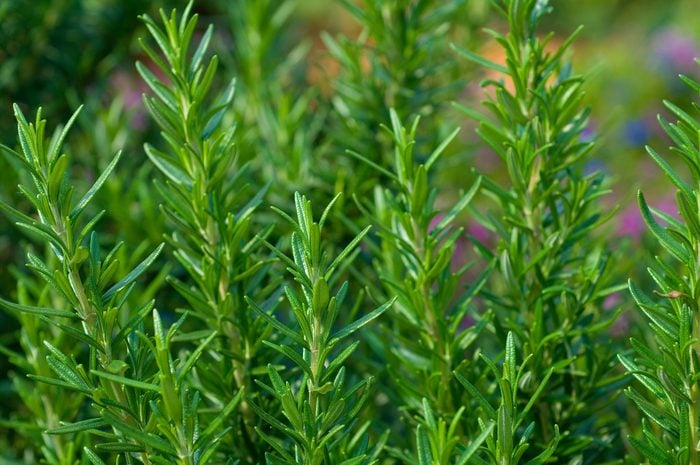
Rosemary
Research in 2016 suggested that medicinal herbs like rosemary may help memory and concentration, improve mood—and sweeten breath. “Rosemary may offer a few health benefits, but research is limited at this time,” Gaffen says. “[…M]ost studies focus on the use of high dose extracts and rosemary essential oil (different from culinary rosemary added to dishes).”
“That being said,” she adds, “rosemary may benefit cognitive health in older people and [individuals] with dementia and improve mood and sleep in some people.”
These are the surprising reasons gardening is one of the healthiest things you can do
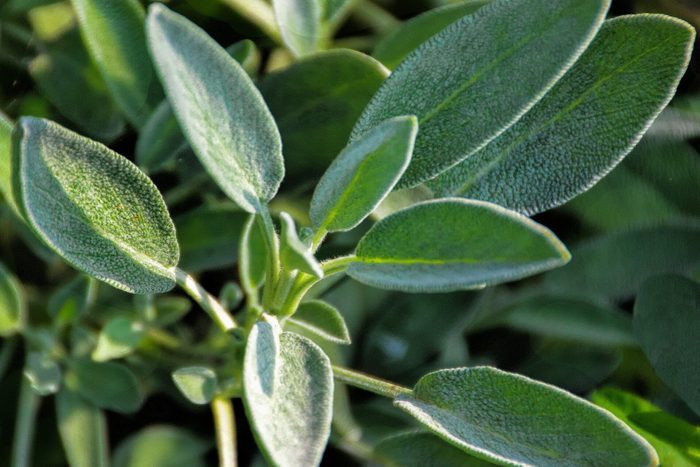
Sage
Sage’s genus name, Salvia, means “to heal,” reflecting its early use as a medicinal herb before it became better known for culinary purposes. “Sage is very drying (astringent) and has loads of volatile oils in its leaves, which are the part used in herbal medicine,” says Haynes. “Astringent herbs can be used to firm up the skin (topical use), slow down breast milk production, and dry up wet coughs, among other things.”
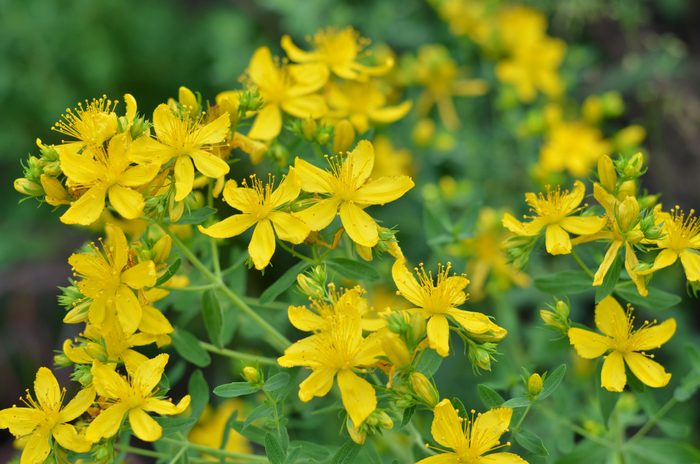
St. John’s Wort
If you suffer from mild to moderate depression, you may have thought about trying St. John’s wort. “St. John’s wort, specifically Hypericum perforatum, is thought of as ‘the depression herb,’” says Haynes. “Hypericin is a main actor in St. John’s wort’s effect on the nervous system.” However, more research is needed to understand the nuances of this medicinal herb as studies have shown mixed results for its effectiveness for this purpose.
“Traditionally, SJW has been used as a topical therapy for breakouts of Herpes simplex,” says Haynes.
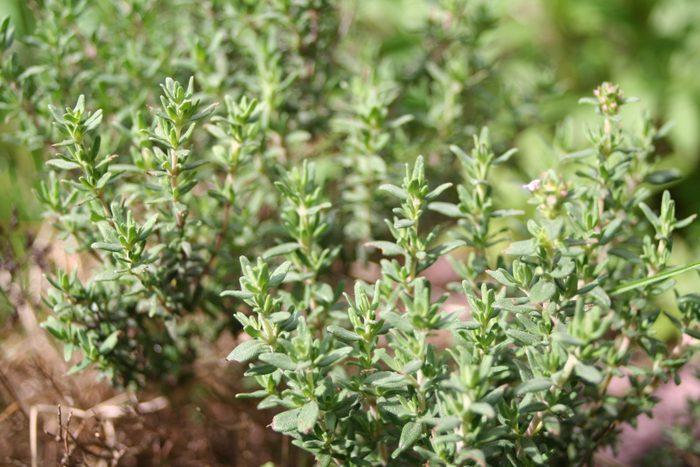
Thyme
“Thyme is a common kitchen herb that’s easy to grow, and very handy to have available,” says Haynes. The tiny leaves are harvested and used to make a cup of tea or to add a boost of flavor to a savory dish. The active principle in thyme, thymol, is a strong antiseptic. “I love to use thyme in the winter as a gentle warming expectorant, brewed as a tea,” says Haynes. “It’s also great in a simmering pot on the stove, as a general disinfectant humidifier for the air.”
If you suffer from coughs, congestion, indigestion, or gas, consider using this medicinal herb.
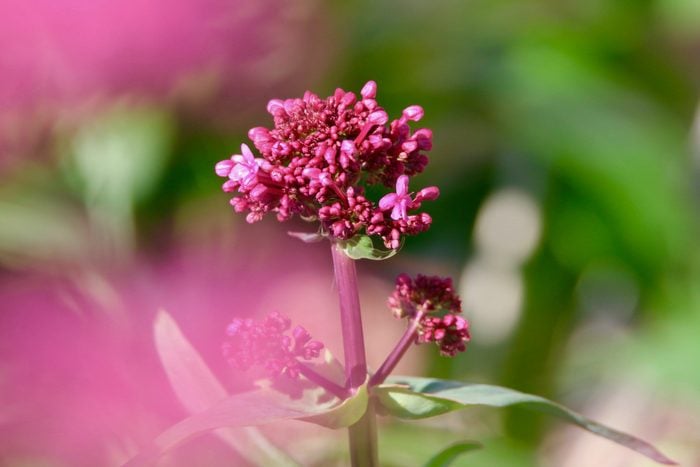
Valerian
Valerian often graces the health aisle and section for teas as a main ingredient for bedtime infusions, but it’s easy to grow at home, too. “Valerian root is a famous sleep aid, though it can be too strong for some (and even keep some people awake!),” explains Haynes.
“For a gentler alternative, I like to use the Valerian flowers,” she says, by harvesting and drying the petals to make a cup of tea.
Follow The Healthy on Facebook, Instagram, and Twitter, for all things health and wellness. Keep reading:
- Here’s Why Your Stress Is Ruining Your Dental Health, Says a Dentist
- The 8 Best Indoor Plants for Mental Health, Say Wellness Experts
- 6 Essential Oils to Try for a Good Night’s Sleep (and 3 to Avoid)
- This Is What a CSA Box Is—and 7 Ways It Can Improve Your Health
- Taking These 3 Supplements Has No Effect on Preventing Disease, Says New Study

